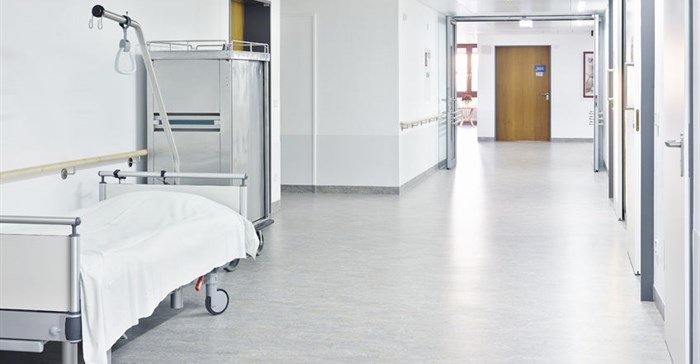





This is coupled with a private healthcare industry cost blow-out in 2016 (largely related to increased hospital admission rates) and an oversupply of private hospital beds, particularly in metropolitan areas. There are approximately four private hospital beds per 1,000 medical scheme beneficiaries in South Africa and this number is increasing.

“Some parts of the country have as many as six beds per 1,000 people. This is twice or three times higher than the ratio seen in efficient systems with good community-delivered healthcare services,” says Dr Brian Ruff, CEO of healthcare management company, PPO Serve.
For example, the UK has 2.5 hospital beds per 1,000 population and New Zealand has 2.8. When allowing for differences in age, gender and disease burden, regions in South Africa with more hospital beds see more hospital admissions, without any observable difference in quality outcomes.
As a result, in 2016, Bonitas Medical Fund commenced negotiations with the three large hospital groups in South Africa, with a view of creating a network of designated service providers (DSPs). A hospital network allows for the scheme to negotiate preferential tariffs with participating hospitals, to help curtail the burden of escalating healthcare costs on members. This follows one of the core strategic pillars of Bonitas – strategic purchasing – which uses the scheme’s market share to negotiate and influence prices.
By retaining this strategy, a saving of more than R100m in 2017 and around R500m over the next three years in present value terms is projected. This will directly impact future contribution increases and ensure that the scheme can continue to meet the needs of its members.
“Because hospitals admissions are the biggest expense for medical schemes, it is vital that the scheme sources the lowest possible tariffs. The reasons are two-fold. It maintain the scheme’s sustainability and ensure that our members continue to have access to affordable healthcare of the highest standard,” says Gerhard van Emmenis, acting principal officer of Bonitas, says,
“To this end, hospital groups were advised that Bonitas would restrict member cover at 14 hospitals, located in metropolitan areas where there is an oversupply of hospital beds, thereby addressing supply-induced demand.
“These hospitals were carefully selected to ensure that members would continue to have access to quality care in other hospitals in close proximity,” Van Emmenis explains. The hospital groups were asked to propose discounted tariffs to determine which groups’ hospitals would be excluded. Life Healthcare’s bid was the least beneficial for members and as such 14 of Life Healthcare’s facilities were identified for restricted access.
“The high ratio of hospital beds per capita in the private healthcare sector results in a low threshold for hospital admissions, increasing the rate of hospital admissions through supply-induced demand,’ he says. “Under normal circumstances the market or demand dictates pricing. However, in the medical scheme industry the law of supply and demand is distorted in that medical schemes pay the majority, if not all of the hospital costs.”
“Patients or members are generally not involved in the settlement of the hospital invoices as most are dealt with electronically and are therefore unaware of the costs involved, or how hospital costs affect their medical scheme contributions.
“In addition, it is the norm for doctors or specialists to specify which hospital patients should use and it is fair to say that very few patients ‘shop around’ for the most cost-effective hospital rates.”
These factors forced a double-digit increase in Bonitas’ contributions in 2017. Such increases are not sustainable in the long term and, as such, the scheme has taken the bold step of using its market power to protect its members and the scheme’s sustainability by implementing a strategy to address both the cost of hospital services and the increasing admission rate arising from supply-induced demand.
“Hospitals account for about 40% of total medical schemes claims and we are asking hospital groups to become more accommodating during fee negotiations with medical schemes. This could make a significant impact on the medical scheme affordability. Control of hospital tariffs and utilisation would also contribute to reducing the increases to medical scheme contributions considerably, thereby improving access to a greater proportion of the population,” says Van Emmenis.
But negotiations are not the only steps taken toward cost containment. The scheme offers a range of managed care initiatives aimed at actively managing disease and ensuring the coordination of care. Van Emmenis believes this will go a long way towards managing the increasing disease burden and sustainability of the current healthcare funding model.
From a medical scheme industry perspective, which derives the majority of its members from employees in the private and public sector, fewer young people are joining medical schemes. In addition to this, when medical aid costs rise, younger, healthier and cash-strapped medical aid members often take a gamble and go off medical aid altogether. This does little to offset the growing disease burden and the ageing medical aid scheme population.
“I believe the way forward is an increased focus on prevention and utilisation of managed care protocols in disease management and coordination of care and wellness. To this end, Bonitas uses an emerging risk model which helps the scheme identify members likely to develop high risk conditions and implement managed care protocols so they can proactively manage their lifestyles and reduce the chances of developing these conditions,” Van Emmenis concludes.